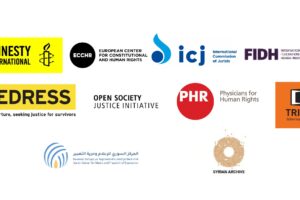II. Manifestations of violence against women and girls, its causes and consequences
A. Violence in the family
13. The Government’s Forced Marriage Unit gave advice or support related to forced marriage in 1,302 cases in 2013. Victims included people thought to be at potential risk, those going through forced marriage, and those who had already been forced to marry, with 82 per cent of female victims and 40 per cent under the age of 18.{{7}} Ninety-seven cases involved victims with disabilities and 12 involved victims who identified as lesbian, gay, bisexual or transgender.{{8}}
III. Implications for effective citizenship rights
C. Social and cultural rights
66. Other concerns regarding stereotyping include the narratives around single parenting, which often demonize single mothers; the infantilization of women with disabilities; the stereotyped assumptions about the skills and backgrounds of refugee, asylum-seeking and migrant women; and the stereotyping of lesbian, bisexual and transgender women in respect of relationships, family and reproductive choices.{{68}}
IV. Challenges in fulfilling the State’s obligation to act with due diligence to eliminate violence against women
A. Prevention
71. Prevention is one of the guiding principles of the United Kingdom strategy on violence against women, and it aims to prevent violence against women and girls from happening in the first place by challenging the attitudes and behaviours which foster it, and intervening early to prevent it. Yet shortcomings remain in ensuring the promotion of gender equality and challenging harmful attitudes and behaviours, including among children and teenagers, especially at schools. According to interviewees, the work on issues such as bullying is often de-gendered, and the expansion of faith schools has led to reticence to provide education on sex, sexuality and relationships.
72. A 2013 study found a lack of high-quality, age-appropriate sex and relationships education in more than a third of the schools inspected in England.{{69}} Personal, social, health and economic education modules are not compulsory and, when offered by schools, often avoid discussion of sexual and emotional feelings and issues such as sexual abuse, homosexuality and pornography. The report also highlights how children and young people may be left at risk when they are not taught appropriate language or how to describe unwanted sexual behaviours, or where to go to for help.{{70}}
B. Protection
93. Interviewees also stated that women from black and minority ethnic communities, women belonging to the lesbian, gay, bisexual, transgender and intersex (LGBTI) community and women with disabilities are more adversely affected by these cutbacks. These women are often subjected to entrenched discriminatory practices in the political, social and economic spheres and are more likely to depend on benefits and support from an increasingly underresourced non-profit sector. Some argued that it was precisely the specialized services catering for black and minority ethnic women which are more affected, even more so than the services available to the mainstream violence against women and girls service providers.
107. The Special Rapporteur would like to address the following recommendations to the Government of the United Kingdom:
(a) Prevention and awareness-raising:
(iii) Ensure a holistic approach to prevention of violence against women and girls by including appropriate and comprehensive sex and relationship education in schools as a compulsory subject; providing adequate training to teachers and other school staff; and developing gender-specific prevention policies;
Link to full text of the report: Report-SRVAW-UK-2015-eng
[[7]]7. See https://www.gov.uk/government/uploads/system/uploads/attachment_data/ file/291855/FMU_2013_statistics.pdf.[[7]]
[[8]]8. Ibid. [[8]]
[[68]]68. See www.engender.org.uk/content/publications/Gender-equality-and–Scotlands-constitutional-futures.pdf, p. 34.[[68]]
[[69]]69. See www.gov.uk/government/publications/not-yet-good-enough-personal-social-health-and-economic-education, p. 7.[[69]]
[[70]]70. Ibid.[[70]]




